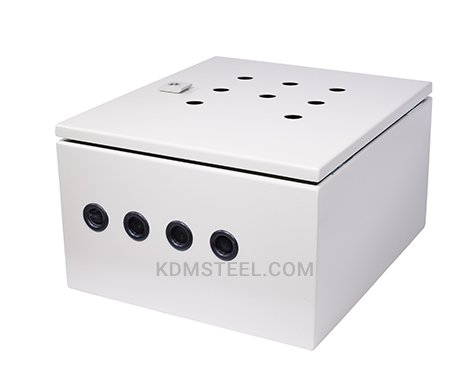- Custom Battery Enclosure
- IP65/IP66 Certification
- Fast Sample Production within 3 days
Custom Battery Enclosure Manufacturer in China
KDM battery enclosures keep your batteries safe from weather and safe against theft. The battery enclosure maintains consistent temperatures and meets standard requirements. Our battery enclosure also features locking mechanisms that protect unauthorized people against possible electrical dangers if they happen to be tampering with your equipment.
KDM Battery Enclosure Series
Send your Inquiry on KDM Battery Enclosure Box


KDM battery enclosure is suitable for industrial off-grid solar power systems, such as those used in the oil and gas patch and in a traffic control system that uses a battery or multiple batteries that need a place to live, sheltered from the elements and kept dry and secure.
- Manufacturing Capacity
- Buying Guide
- Enclosure Designs

4000W high-performance laser cutting machine, +/- 0.05mm accuracy. No burr, no scratching.

Multi-Functioning flexible welding equipment, high accuracy, no deformation.

+/- 0.5mm bending precision, smooth surface without bending marks.

10+ welding experienced workers, perfect overall appearance.

High speed and accuracy foaming machines, fast and qualified Gasket

The expert assembling team, consistent assembly quality on every KDM enclosure
KDM Battery Enclosure

Our battery enclosures can be pole-mounted or ground-mounted and are suitable for indoor and outdoor applications. KDM battery enclosure is available in various sizes and configurations for housing batteries and support equipment, engineered specifically for the PV industry but also suitable in a wide variety of applications.
KDM battery enclosures are engineered to resist crash and intrusion and to cool individual modules using innovative materials, design, and joining technologies. The battery enclosure design is according to the specific applications and requirements of your project. All enclosures include rainproof design, electrical knockouts, and ventilation. The product features and functions differ depending on the location and needs of your system. KDM white powder coating and quality manufacturing ensure a robust enclosure that will survive even the harshest conditions.

Battery Enclosure Detail
KDM offers custom enclosures to meet any of your specifications. These enclosures can be aluminum or polymer and applied to everything from the customer’s needs for deployment in extreme conditions. Every battery enclosure is manufactured to meet size and weight load requirements. KDM battery enclosure can be designed as a pole mount or free-standing installations. The battery enclosure is commonly made from aluminum materials but can also be fabricated using galvanized steel, carbon steel, and stainless steel.
At KDM, you had the choice to select surface finishes, such as powder coat, wet coat or galvanized. Custom-designed enclosures are made in special orders specifically for our customer’s applications, we can fabricate and build a variety of sizes and types of enclosure. If required, your enclosure can be built with separate sealed compartments for batteries and electronics.

Battery Enclosure Manufacturing
KDM designs and manufactures each solar battery enclosure to meet these and other crucial requirements at pricing that ensures the viability of alternative energy projects. Our experts keep developing innovative materials to reduce fire hazards while maintaining low battery weights. They can also help by recommending material, assembly simplicity, compatibility with standard requirements, protection status, shape and size, and cost.
With a KDM battery enclosure, you can ensure your batteries are protected from exposure to environmental conditions, enhance safety, assure battery longevity. KDM, with over 10 years of expertise in manufacturing all types of enclosure, has the capability of providing a durable and high-performance battery enclosure fitted to your requirements.
We make custom enclosures for almost any battery. All of our battery enclosures are manufactured from heavy materials that don’t lose their shape after being loaded with batteries. If you are interested in our battery enclosure, don’t hesitate to contact us, today!

battery enclosure 1

Battery Enclosure 2
The Ultimate FAQ Guide to Battery Enclosures
- What is a battery enclosure?
- Are battery enclosures vented?
- What types of batteries can KDM battery enclosures house?
- Do sealed batteries require battery enclosures?
- Are there enclosures for lithium-ion batteries?
- How are battery enclosures rated?
- What power range of batteries can enclosures house?
- How many batteries can 1 enclosure house?
- Can battery enclosures house electric vehicle batteries?
- What safety features do battery enclosures have?
- Where can battery enclosures be used and for what applications?
- Are there underground battery enclosures?
- What are some tips to design a battery enclosure?
- What materials can be used for battery enclosures?
- What designs of battery enclosures can I choose from?
- What features can I request for battery enclosures?
- What accessories can I request for battery enclosures?
- What paints and coatings can be used for battery enclosures?
- How can I add my logo or safety symbols on the battery enclosure?
- What maintenance do batteries require?
What is a battery enclosure?
A battery enclosure is a box designed to protect a battery from outside factors like weather conditions.
If you need something for energy storage and battery storage, these are for you.

Battery enclosure
Are battery enclosures vented?
Battery enclosures require vents to prevent battery overheating.
This helps prolong battery life and also prevents toxic leaks.
Also, vents allow gases released by the batteries to escape the enclosure and prevent its dangerous buildup.
Typically, passive venting is enough, while active venting—like fans—is required in extremely rare cases.

Vented battery enclosure
What types of batteries can KDM battery enclosures house?
KDM battery enclosures can house all 5 main types of batteries.
These types are flooded, sealed, VRLA, AGM, and gel batteries.
Flooded batteries are the traditional deep cycle-style battery.
Its liquid electrolyte moves freely in the cell compartment.
The user has access to each individual cell.
These flooded batteries are common in the car starting batteries, ATV batteries, motorcycle batteries, and solar backup systems.
Deep cycle batteries are designed for regular full discharge down to most of their capacity.

Flooded battery
Sealed batteries can mean many things.
Most commonly, it is understood as a modification on the traditional flooded battery.
Here, the user does not have access to individual cells, but the internal structure is the same.
The applications are generally the same as for flooded batteries: engine starting and limited deep cycle applications.

Sealed battery
VRLA stands for Valve Regulated Lead Acid battery.
This is yet another sealed battery.
However, the valve mechanism provides a safe regulation of the exit of hydrogen and oxygen gasses during the operation of the battery.
VRLA batteries are often used in mobility scooters, alarms, toys, and other everyday applications.

VRLA battery
AGM stands for Absorbed Glass Mat battery.
In these batteries, a wet electrolyte is suspended close to the active material of the plates.
This modernized construction makes the battery more efficient.
In fact, AGM is simply a more progressive version of VRLA.
AGM batteries are used in high-performance engines, solar energy applications, RV boats, motorcycles, telecom generator batteries, and more.

AGM battery
Gel batteries, or gel cell batteries, are similar to AGM batteries.
Here, the electrolyte is also suspended, but it is dry.
The liquid acid is mixed with a silica additive to solidify it.
Gel batteries are sensitive to excessive voltages, but they work better in hot weather.
People may sometimes mistake gel batteries for sealed, maintenance-free VRLA or AGM batteries.
It is important to know the type of battery for sure to be able to design a proper weatherproof battery enclosure.
Gel batteries are relatively rare.
They are used in wheelchairs, medical mobility equipment, RV deep cycle applications, and more.

Gel battery
More specific types of batteries include lithium-ion, nickel-cadmium, and more.
Do sealed batteries require battery enclosures?
- Sealed batteries and modular battery cartridges can be used without an enclosure.
- If the room has controlled access, such as entry only by authorized employees, sealed batteries can be installed in open racks.
- However, if controlled access is lacking, batteries should be housed in lockable enclosures.
Importantly, sealed batteries require special ventilation for the exit of hydrogen gas that the batteries release.

The sealed battery in an enclosure
Are there enclosures for lithium-ion batteries?
Yes, lithium-ion (Li-ion) batteries can be housed in enclosures.
Typically, Li-ion batteries are those that you put in your remote.
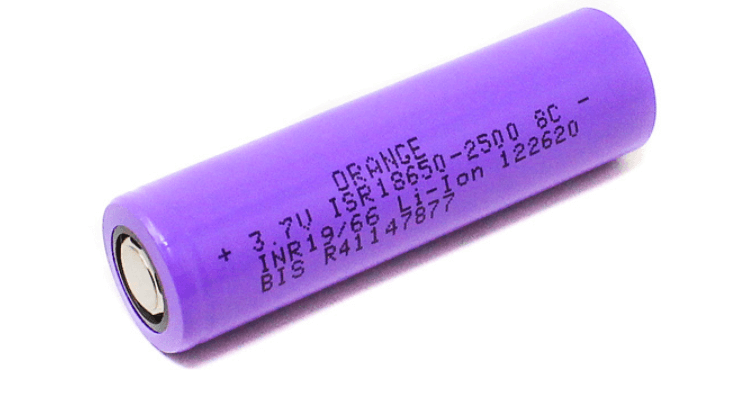
Li-ion battery
So, they are great for everyday applications, and the enclosures for big Li-ion batteries are usually portable.
However, they can also be big and require battery storage.
Li-ion batteries outlast AGM batteries and work better than gel batteries.
They can also be deep cycle batteries, and they do not require venting when charging.
Not many people know about this option, but it does have advantages.
How are battery enclosures rated?
Commonly, battery enclosures are rated as IP65, IP66—also NEMA 3R or 4/4X.
Here is what this all means.

NEMA and IP ratings
IP65 means that the enclosure is dust-tight and protects from weak jets of water.
This is great for normal outdoor weather.
IP66 provides a little more water protection, withstanding more powerful jets of water.
This could be useful during storms.
NEMA 3R provides great protection against rain, storm, and the formation of ice but has limited protection against dust.
NEMA 4 is completely watertight, and NEMA 4X includes additional protection against corrosion.
This is perfect for outdoor industrial and marine applications.
These waterproof battery enclosures defend batteries against vandalism, damage from hose-down, splashing water, oil, and coolant.
What power range of batteries can enclosures house?
Battery enclosures can house batteries of any power range.
This power range can encompass 10 thousand VA (volt-amperes), all the way to 800 thousand VA.
Standard battery enclosures also house batteries with a capacity of 24Ah (ampere-hour) and 105 Ah.
Also, enclosures can house batteries with a maximum DC (direct current) voltage of 800Vdc.

10 000 VA
There can also be cases or battery enclosure boxes for 12V batteries.
These 12V battery cases are small and very portable, protecting batteries from the weather.
Such batteries can be taken camping, used to power various appliances, and much more.
Typically, such boxes are made from plastic or fiberglass, but they can be made from steel as well.
How many batteries can 1 enclosure house?
This, of course, depends on the dimensions of your enclosure, the type of batteries, and their size.
Normally, a maximum of 60 blocks fits into a large enclosure.
At KDM, we can design a battery enclosure that will house as many batteries as you wish.
All these batteries can be connected in series or in parallel.
The batteries could have positive, negative, and middle point poles.

Quantity of batteries
Can battery enclosures house electric vehicle batteries?
Yes, electric and hybrid car batteries need aluminum enclosures as well.
These enclosures need to satisfy the requirements for automobile safety, crash-resistance, cooling, and overall vehicle dynamics.
Car battery enclosures need special engineering to optimize shape, gauge, size, load, weight, and many other things.
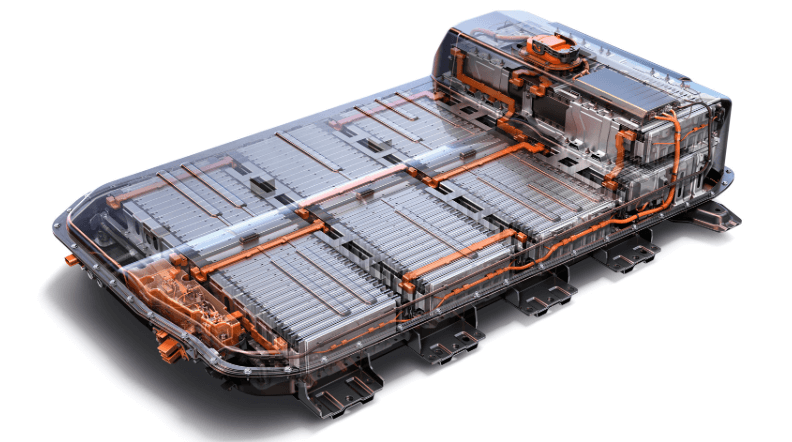
Electric car battery
What safety features do battery enclosures have?
As mentioned above, battery enclosures have vents as safety features to let gases escape and prevent battery overheating.
Furthermore, waterproof battery enclosures have special rubber gaskets to prevent the ingress of water into the enclosure.
Battery enclosures may also have lockable doors to prevent unauthorized access and tampering with your electrical batteries and generators.
Lastly, explosion-proof battery enclosures may have special features to contain explosions of batteries.
These features include high-strength steel, an anti-fire base, and strong clamps.
Such enclosures are used for over-charging and forced-discharging of batteries.
Explosion-proof battery cabinets are typically used for UL and another testing of batteries.

Explosion-proof batteries
You can also include safety spill containment and a DC disconnect.
A spill containment is when the opening of the door is higher than the base of the enclosure.
This way, anything that spills or drips will not leave the enclosure.
In batteries, this is sometimes done to prevent toxic leakage, and with flooded batteries that need watering.
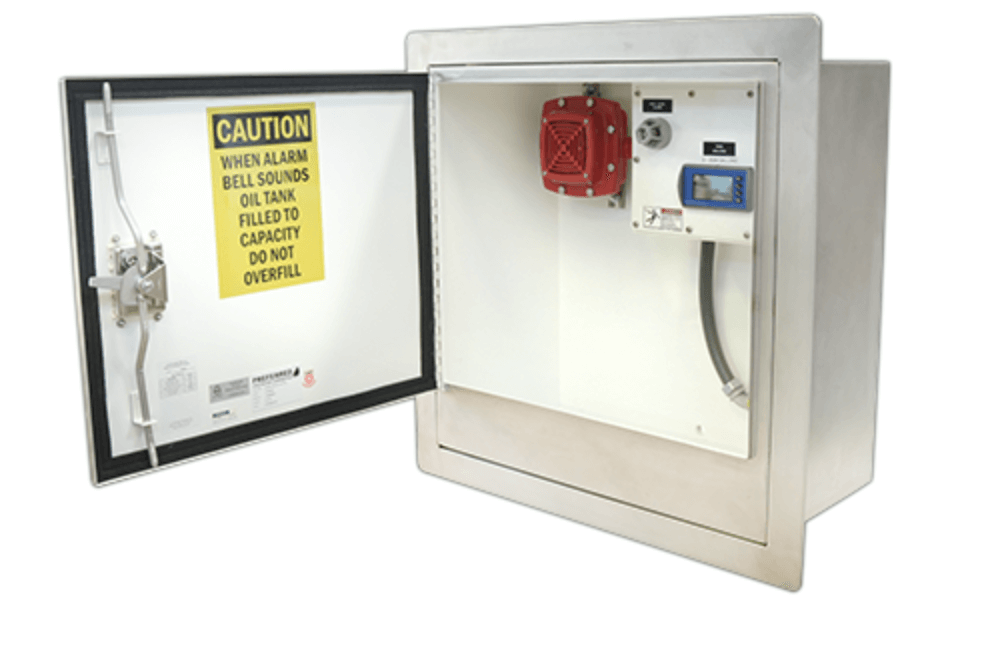
Spill containment
A DC disconnect is used with solar batteries and panels to protect appliances from surges of energy.
Damage can be done to interior wiring by weather conditions, so a DC disconnect is a necessary safety measure for rapid shutdown.
In some places in the US, a DC disconnect is required by law, so including it in a solar battery enclosure is important.

DC disconnect
Where can battery enclosures be used and for what applications?
Batteries provide a great source of backup power, so any application that can benefit from this would need battery enclosures.
KDM weatherproof battery enclosures can be used both indoors and outdoors.
They are commonly used in industrious machinery/equipment, transformers, medical equipment, solar energy applications, generators, and more.
Battery enclosures are perfect for outdoor environments because they are dust-tight and rain-proof.

Outdoor battery enclosure
These enclosures are also well protected against tampering, especially if the doors are lockable.
For example, a battery storage cabinet may be attached to the traffic control box, so that if the main power goes out, the batteries maintain traffic lights.
Quality battery boxes protect the batteries from the elements so that when their time comes, the batteries are able to perform.
These stock battery enclosures are also known as uninterruptible power supply (UPS) cabinets.
Further applications may include NEMA generator enclosures and solar battery bank enclosures.
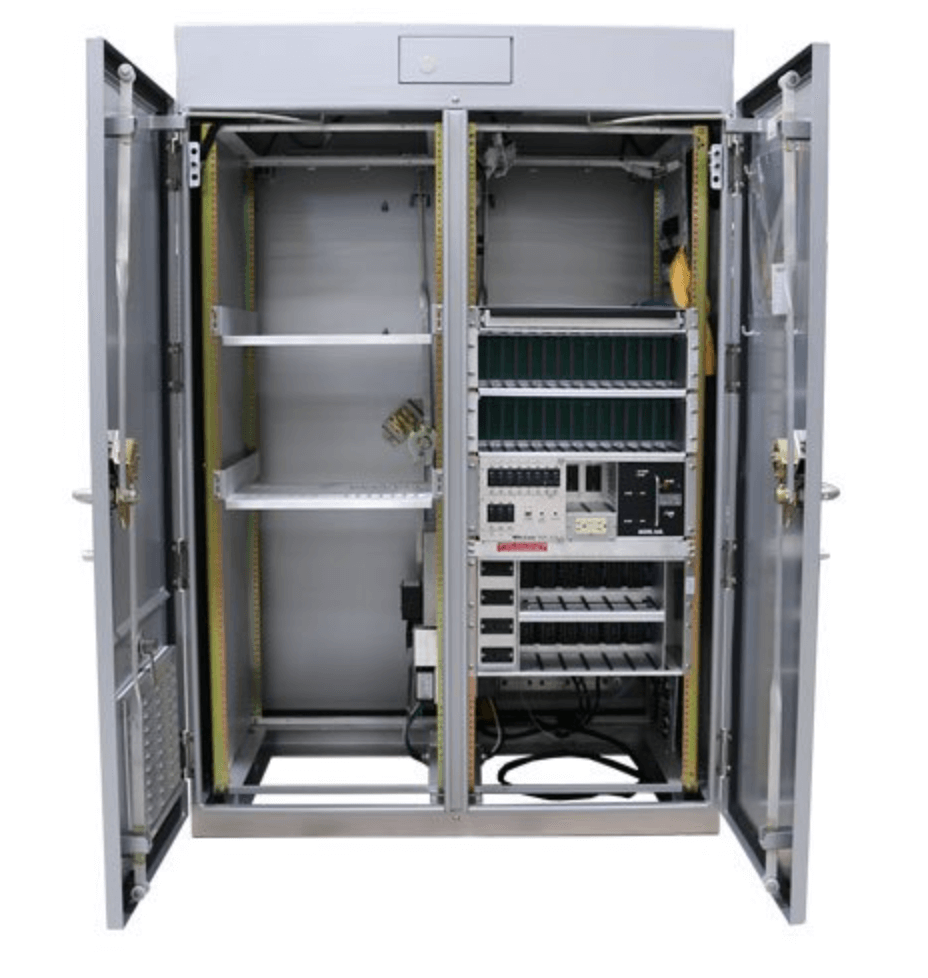
Generator battery enclosure
If your business uses eco-friendly solar panels, our solar battery bank enclosures are the right choice for you.
These energy storage cabinets will protect your solar batteries from outdoor factors.

Solar bank battery enclosure
Generators are used in shopping malls, hotels, factories, and even residential homes.
So, protecting generator batteries with an enclosure is also important.
Battery enclosures can be small and portable, making them versatile in use.
Finally, there are even battery enclosures for electric skateboards!
These battery enclosures esk8 are scratch-proof and house the necessary quantity of batteries to power electric skateboards.

Electric skateboard battery box
Are there underground battery enclosures?
Yes, underground battery enclosures can be used to power underground generators, UPS systems, telecom applications, or off-grid appliances.
These battery enclosures are watertight, resist dust and dirt, are thermally stable, and protect the environment from toxic battery leakage.
They can have a venting system is housed inside a larger concrete box.
Alternatively, these enclosures may omit ventilation if they use batteries like Li-ion.

Underground battery enclosure
What are some tips to design a battery enclosure?
Below are some points you should keep in mind while designing or proofreading designs for your perfect battery enclosures.
- What equipment are you putting there?
This could be a charger or a battery.
- What is the size of the batteries and/or charger?
This determines the height and width of the enclosure and racks.
- What is the configuration you need?
This includes vertical or horizontal racks/dividers, knockouts, shelves, inner boxes, and more. Also, consider enclosure wall thickness.
- When designing height, consider extra space for chargers and fans, and space for battery maintenance.
- What environment will your battery enclosures be in?
Outdoor battery enclosures need extra protection against dust and water than do indoor enclosures.
Also, extreme cold and extremely hot weather should also be considered.
- How will you be mounting your battery enclosure?

Battery enclosure design
What materials can be used for battery enclosures?
The materials used for weatherproof battery enclosures are not different from materials used for other types of enclosures.
Metal battery enclosures include those manufactured from carbon (mild) steel, galvanized steel, and stainless steel – usually of the grades 304, 316, or 316L.
Carbon steel is usually duller than stainless steel.
It is also magnetic and more malleable since it only has iron and carbon.
This steel is also prone to corrosion.
Stainless steel is created by adding chromium, nickel, and molybdenum to the iron-carbon alloy.

Stainless steel battery enclosure
Steel grades 304 and 316 differ in the content of all additives.
Grade 316 is slightly stronger and resistant to saline and acidic water because of molybdenum.
But grade 304 is cheaper and more common.
Grade 316L has a lower carbon content, making it a little bit stronger.
Galvanized steel is coated with a protective layer of zinc that prevents corrosion.

Galvanized steel
Please note that galvanized steel is more expensive and heavier than stainless steel.
Another type of steel that can be used is cold-rolled steel, which is thinner and denser than normal steel—and thus, it is stronger.
Stainless steel or carbon steel battery enclosures are great for large cabinets.
Battery enclosures can also be made from aluminum alloys.
They are not necessarily better than steel alloys, but can be depending on what you are going for and what are your needs.
Just like steel grades, aluminum alloys can be either of the 5052 or the 6061 series.
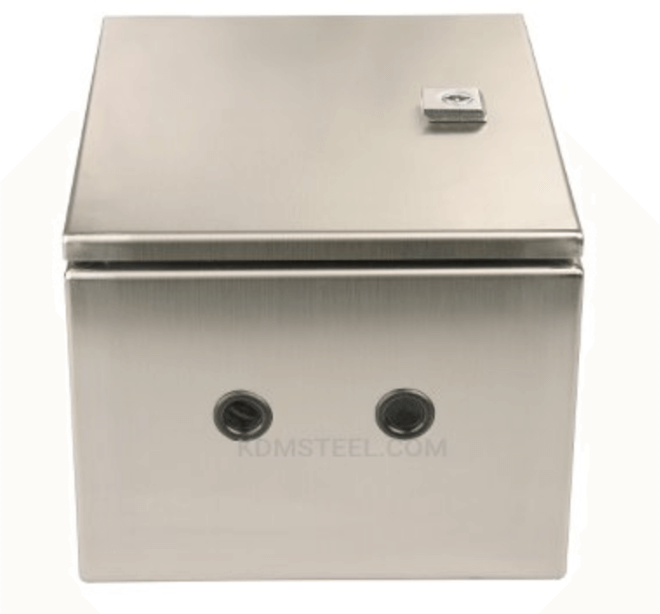
Aluminum battery enclosure
Alloy 5052 is more weldable, meanwhile, 6061 has a higher resistance to corrosion.
Also, 6061 is more expensive.
Aluminum has a layer of oxide on top that prevents any corrosion.
Aluminum battery enclosures are highly popular for all designs of cabinets and cases because aluminum is lightweight.
This material is especially good for battery enclosures exposed to solvents, petrochemicals, some acids, most sulfates and nitrates.
There are also fiberglass battery enclosure boxes and plastic battery enclosures.
These are typically for portable applications or small batteries.
Also, plastic protects well from corrosion but may be easier to break than metal battery enclosures.

Plastic battery enclosure box
If you would like to learn more, send in your inquiry now for a consultation!
What designs of battery enclosures can I choose from?
We are happy to offer you countless designs of free-standing enclosures, wall-mounted enclosures, pole-mounted enclosures, and custom enclosures.
Free-standing enclosures and floor-mounted enclosures are perfect either for large batteries or many batteries that are too heavy to be wall-mounted or pole-mounted.
Free-standing battery enclosures could be of any height, width, and depth according to your requirements.
They are also portable, and can be big enough to be categorized as walk-in enclosures.
However, this is rare, and used mostly to house other electrical equipment in addition to batteries.
We can also manufacture small free-standing enclosures to be floor-mounted or just placed down.

Free-standing battery enclosure
Wall-mounted enclosures use mounting brackets, screws, and pads for installation onto a wall.
Wall-mounted battery enclosures are perfect for small devices in public places.
Also, this design is the most common one for battery enclosures.

Wall-mounted battery enclosure
Pole-mounted battery enclosures are similar to wall-mounted ones, but they are attached to a pole.
This mode of installation is common for traffic light systems with backup batteries.

Pole-mounted battery enclosure
Of course, we also have our custom enclosures, which can be of any design, shape, and requirements, as well as have multiple doors.

Custom battery enclosure
You can request any feature to better suit your work environment.
We are happy to create your perfect custom KDM battery cabinet!
What features can I request for battery enclosures?
You can request active vents, windows, hinged doors, locks, cable management systems, and much more.
Vented enclosures could have passive and active venting systems.
Passive vents include holes, mesh, and louvered vents.

Passive louvered vents
Active vents, such as radiating fans, help cool the enclosure intensely.
This is vital for long and safe work of a battery.
Not only do batteries need cooling, but they produce gases, such as hydrogen, which needs to escape the cabinet.
Otherwise, the buildup of gasses results in work hazards.

Active venting
These also stabilize air pressure inside the enclosure, preventing condensation which can damage the electrical components of the enclosure.
Plus, the vents can be further upgraded to air conditioners and heat exchangers.
During cold seasons, batteries may need some heating, and during warm seasons, batteries need active cooling.
You can also choose fan kits, filters, and gas vents.
We will provide you with a personalized solution to enhance the work of your batteries.
Windows help personnel examine the electrical components in a quick and non-invasive way.
And if something goes wrong, a window helps to see what is happening right away.

Battery enclosure with a window
Hinged doors control how and how much the door or cover of a battery enclosure opens.
Locks add a layer of security to your battery enclosure.
Locks make sure no one tampers with it or accidentally accesses its batteries and chargers.
This improves safety and helps control access to electrical batteries.
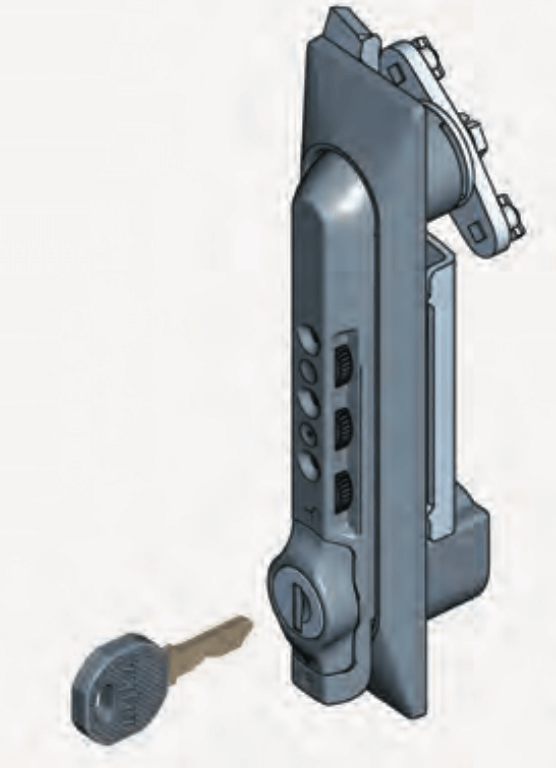
Lock
Battery electrical cabinets also commonly use cable knockouts and battery segregation pieces to increase the functionality of the enclosure.
Cable knockouts allow cables from various appliances to be connected to a battery cabinet.

Enclosure with knockouts
Therefore, battery enclosures may also include cable management systems.
Cable management systems such as cable entry frames and clamps serve to keep wires organized and make them easier to install and maintain.

Cable management system
Racks and dividers can be used to configure the space inside your battery enclosure.
Racks can be used as tiers for many batteries.
Dividers can separate your batteries from other equipment housed in the same enclosure.
Dividers can be horizontal or vertical.
Plus, there could be whole separate compartments inside the enclosure—with a separate door, etc.

Compartments in a battery enclosure
Also, you can choose to include electrical integration, such as overhead lighting, power strips, and door alarms.
These can even be powered by the batteries housed inside the enclosure.
What accessories can I request for battery enclosures?
Besides certain features, you can also add a number of small accessories.
These include solar shields, rain caps, etc.
Solar shields are basically another layer on top of an enclosure that reflects solar radiation, controlling the inside temperature of the enclosure to prolong the life of its electrical components.
In alternative energy applications, this solar shield can be substituted by a solar panel that would charge batteries inside the enclosure.
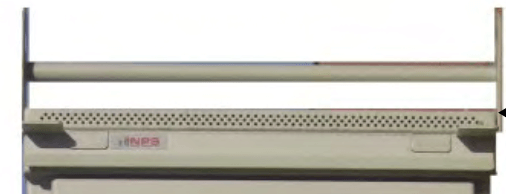
Solar shield
Rain caps are slanted roof-like top pieces that make water slide off the side of the enclosure, thus protecting it from water ingress.
Battery enclosures benefit much from this feature, prolonging its life outdoors.

Rain cap with lifting eyes
We also make casters, thermometers, lifting eyes, and more.
Lifting eyes help transport your enclosure if it is too big for casters, which may be the case with solar battery bank enclosures and NEMA generator enclosures.
Casters make the enclosure mobile, which is great for a battery cabinet.
Thermometers may also be important to monitor the temperature inside your KDM China battery enclosures.
For small cabinets and cases, you can request handles—for portable battery enclosures.
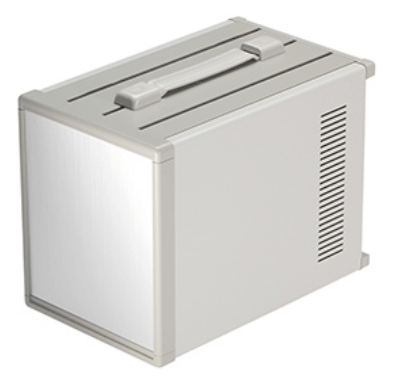
Portable battery enclosure
To learn more, feel free to contact us for more information about all the different features and accessories we offer!
We will also provide any custom feature you request.
What paints and coatings can be used for battery enclosures?
KDM enclosures are well-protected, but the right coating can add a layer of protection as well.
You can request enamel or powder paint coats in any color.
Enamel paint has a glossy finish and is resistant to different weather conditions.
Specific epoxy and PU enamel paints are commonly used for industrial enclosures since they are resistant to corrosion.
Powder paint is deposited with electrostatic force.
This is quicker and easier than enamel.
It is also more flexible in appearance, giving you the option of glossy and matte finishes.

Powder coating finishes
We also offer anodizing and also dining coatings.
Anodizing coating uses anodes to oxidize a metal—usually aluminum—to improve resistance to corrosion.
Steel is not anodized because this process can actually speed up the corrosion of this metal.
Alodine coating, also known as chromate conversion coating, is used to prime steel and aluminum for paint.
Like other coatings, it also prevents corrosion.

Alodine coating
This is a cheaper process than anodizing.
It has a characteristic greenish-yellow hue unless it is painted over.
There can also be anti-graffiti and anti-poster coatings to protect your outdoor battery enclosure from vandalism.
We can provide any coating in any color and finish, so contact us today!
How can I add my logo or safety symbols to the battery enclosure?
Our customizing services include engraving and silk-screening.
Silk screening is the easiest and most cost-effective method of customization of battery enclosures.
Any flat side of the enclosure can be silk-screened with labels, warnings, serial number, company name, and logo.

Silk-screening in red
Engraving your battery enclosure is another customization method.
Usually, about 0.005 inches or 0.010 inches of metal is removed from the surface.
The requested symbol is basically scratched into the surface.
Once the metal has been removed, it is filled in with epoxy paint of any color to match your requirements.

Engraving
What maintenance do batteries require?
Batteries require venting to prevent overheating.
Also, some batteries require watering to keep their internal chemical reactions going.
Thus, when designing enclosures, you need to consider space around the batteries for this maintenance.








